Besiders
A Farm in Central Park
Following her mother’s murder, Amber Tamm Canty found healing and purpose through farming. Now, with thousands flocking to her cause, she’s aiming to change the landscape of food security in New York, starting with Central Park.
Text — Mark Mann
Photos — Naima Green
This is part of the Dossier Black Lives, Green Spaces.
The harvest that Amber Tamm is gathering now was seeded in grief. The 25-year-old urban farmer and floral designer from Brooklyn has lately been drawing Instagram followers by the thousands, especially since COVID-19 propelled so many online in search of gardening tips and inspiration. This summer’s renewal of Black Lives Matter brought even more people her way, many from the Black agricultural scene who are glad to see one of their own find recognition and success in the white-dominated world of farming.
Amber’s followers aren’t passive witnesses to her journey — they’re a community, as she emphasizes again and again. Her supporters demonstrated their commitment in June when she launched a fundraiser to buy farmland out of the city and was able to raise more than $100,000 in less than two weeks. As it turns out, that money will likely go to farm infrastructure, as Amber also received multiple offers from people who want to donate their land.
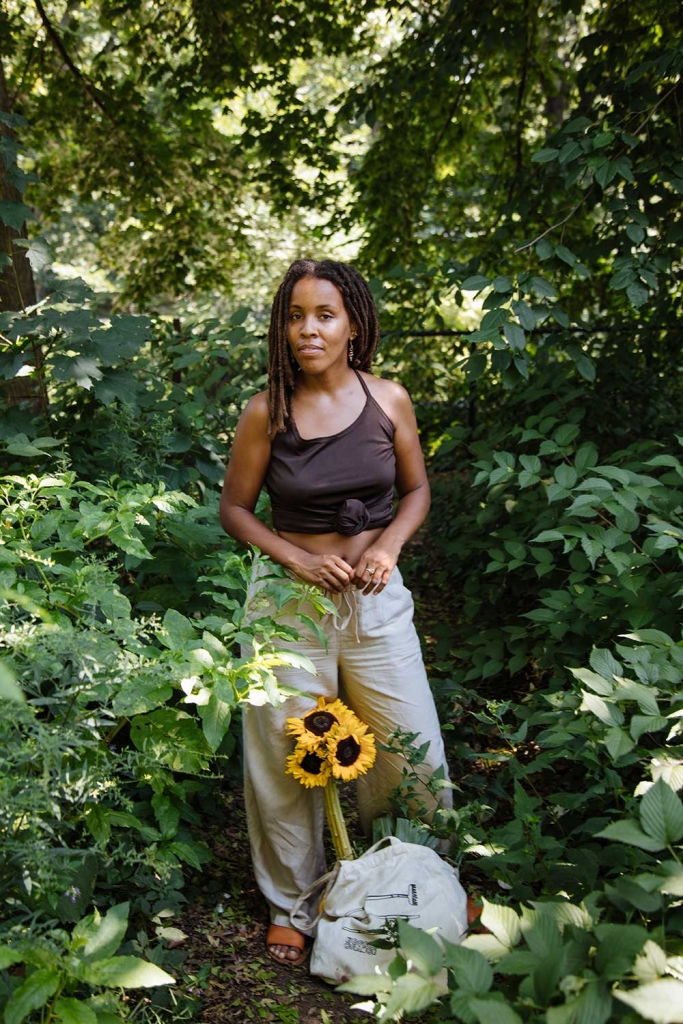
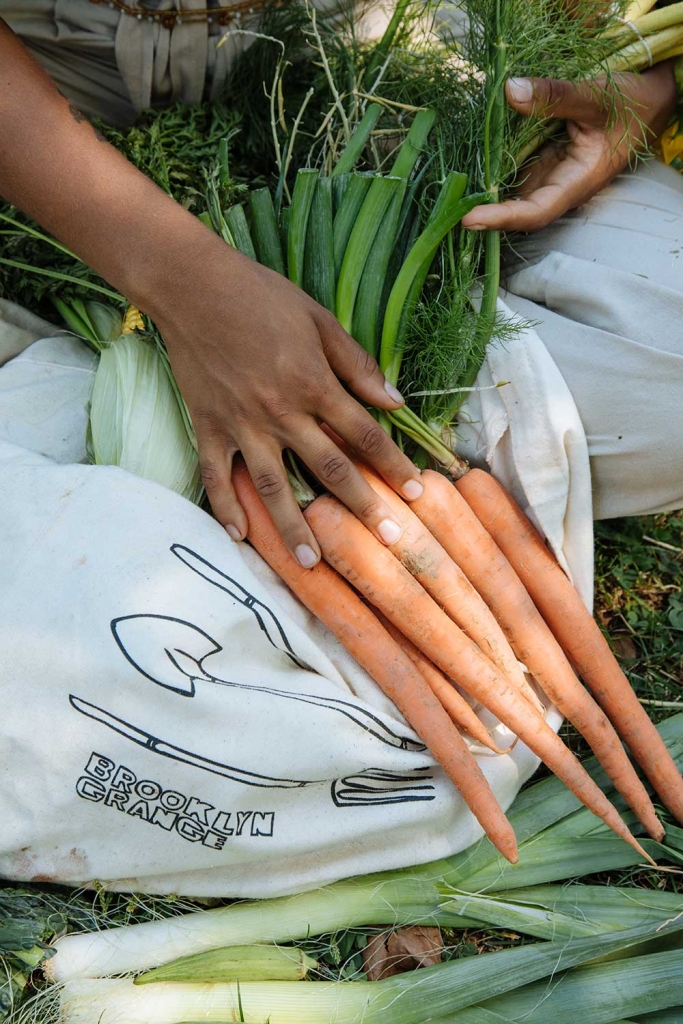
This will make her the first person to own property in the four generations that her family has lived in Brooklyn.
Today, Amber is in high demand. She’s sought after by organizations like the Rodale Institute (a leader in organic farming) and celebrity chef Dan Barber’s Kitchen Farming Project. Her floral designs are recognized throughout New York City and now offer her a steady side income, a dizzying leap from six years ago, when she found herself choosing flowers for the first time in her life: sunflowers and white lilies to grace her mother’s coffin. She was murdered by Amber’s father, a New York City cop.
The sudden death of her mother in April 2014 launched Amber all alone into the world of adulthood. But those first funeral flowers became a lifeline, helping her to land where she needed to be, with her hands in the earth.

Fingers like roots
———
Amber’s universe was upended when her mother died. She went from being an 18-year-old at college studying art education and botany to planning a funeral and finding someone to care for her younger brother and sister. Without parental support and gripped by grief, she needed to figure out a way to provide for herself. A friend pointed her to a farm opportunity that promised room and board, plus a small income. That was enough, so she went for it.
Falling into farming was both a godsend and an ordeal. “Farming was the only job that allowed me to think and grieve while making money, having a place to stay, and getting nourishment,” she says. At the same time, it brought with it another wound to process:
“I’m a descendant of Cherokee and Black slaves, so me being on land is a trauma that I’m working through, on top of working, period.”
For the first few years Amber followed the same path as the Mexican and Caribbean migrant workers with whom she toiled in fields and greenhouses: passing from farm to farm, following demand with little or no foreknowledge of the circumstances of the next job. Some of the jobs were good, but inevitably some were very bad. Often she made as little as $60 a week, and frequently felt sexualized and threatened.
Despite the hardships, working with the soil provided a link to her mother. She read The Secret Life of Trees and learned about how trees communicate with each other through their interlacing roots and along the underground mycelium networks of mushrooms.
“When I touch down into a field, my fingers are a form of roots that are going to connect with where my mom’s body is, regardless of where I am on the planet.”
Throughout her journey with farming, Amber shared openly on Instagram what she was learning and how she was healing. The app became an outlet for her grief and a way to stay connected, so people would know what she was going through in her itinerant farming lifestyle. Eventually Amber gained enough experience to transition to working at a single farm through the entire growing season, but her time following the sun across America had given her the opportunity to learn many different facets of agriculture: conventional, regenerative, organic, permaculture, mushrooms, cannabis . . .
“It gave me time to figure out what I really wanted to do in terms of the agricultural industry,” she says. Mainly, the experience taught her that she wants to be on the ground and in the greenhouses, with the soil and the plants, rather than doing admin work. And it taught her that she wants to own land, so she can challenge how farming is normally done. “I’m not interested in joining agriculture the way that it’s been,” she says.
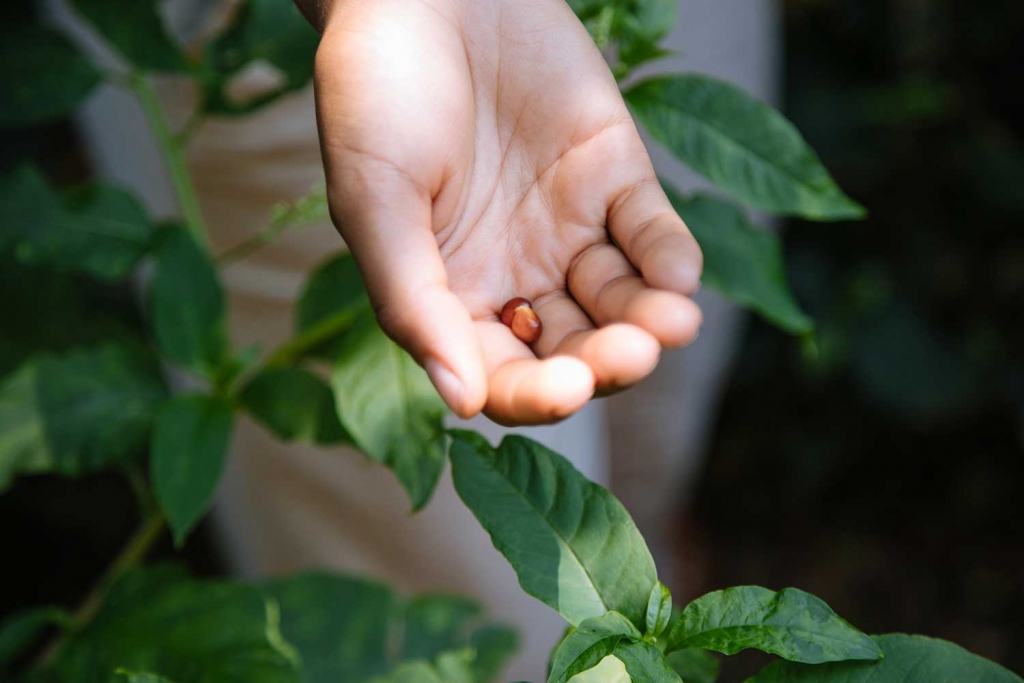
Farming for the future
———
Looking back on everything that happened to her, Amber now sees her trauma as a superpower. Losing her parents early in life and not having anyone or anything to fall back on taught her to be absolutely sure of each step that she takes, financially as well as spiritually.
“The current state of farming — with its roots in slavery and exploitation — is unsustainable.”
Farmers are racing desperately to stay ahead of the massive debt that has somehow become an inextricable part of the practice. The mistake they make, according to Amber, is treating their farm work like a for-profit enterprise, rather than a way of living to support others.
“I’m not interested in running a business,” she says. “That’s what I see a lot of farmers do, but running a business is where harm to Momma Earth comes in. As long as you’re focusing on profitability and paying off USDA loans, you’re not going to have the capacity to do what’s right. And if you do, you’re going to be working 80 hours a week.”
Amber says that a lot of white people in the agricultural community roll their eyes at her, but her approach is proving successful. It’s experience, not naïveté, that makes her think that people will support a mission-based farm operation. When her Future Farm Fund blew past her initial target of $100,000, she set a new goal of $150,000, and the donations keep coming.
“I think there is a way to have sponsorship, to have investors, and, as I’ve proven, to have community,” she says. “As long as community says they got me, and they understand that through providing for me, they’re providing for themselves, then that’s the route I’m going to take.”

The cure for Central Park
———
Rather than coasting on the support she’s received, Amber is rolling it forward to achieve even bigger goals. Even while she sets to work planning her own farm outside the city, where she’ll run a diversified veggie operation, grow cut flowers, and offer training and workshops for BIPOC from the city, she’s begun a quiet campaign to convince the Central Park Conservancy to allow her to farm 14 acres of the park’s Great Lawn.
The Great Lawn is only a short walk from the site of the former Seneca Village, a Black community that was founded in 1825 and then expropriated and demolished in 1857 to make Central Park. For those three decades, Seneca Village was a refuge for African Americans in a city that deeply resented the emancipated slaves emigrating there after abolition. While most landowners in New York refused to sell to Black people, one white couple in that still-rural part of Manhattan subdivided and sold off their land to The New York African Society for Mutual Relief, as well as to the African Methodist Episcopal Zion Church. The men who owned land in Seneca Village could vote, unlike most former slaves, who were prevented by exclusionary laws that required voters to own real estate.
Amber’s own plan for the Great Lawn is to grow a seed garden dedicated to all of the ancestors of Seneca Village, as well as to the Lenape people who were displaced from the region by European settlers. Beyond that, she wants to offer farmer training for teens between 16 and 20, “in that really weird age period where a lot can go wrong and the system itself may not want to help you.”
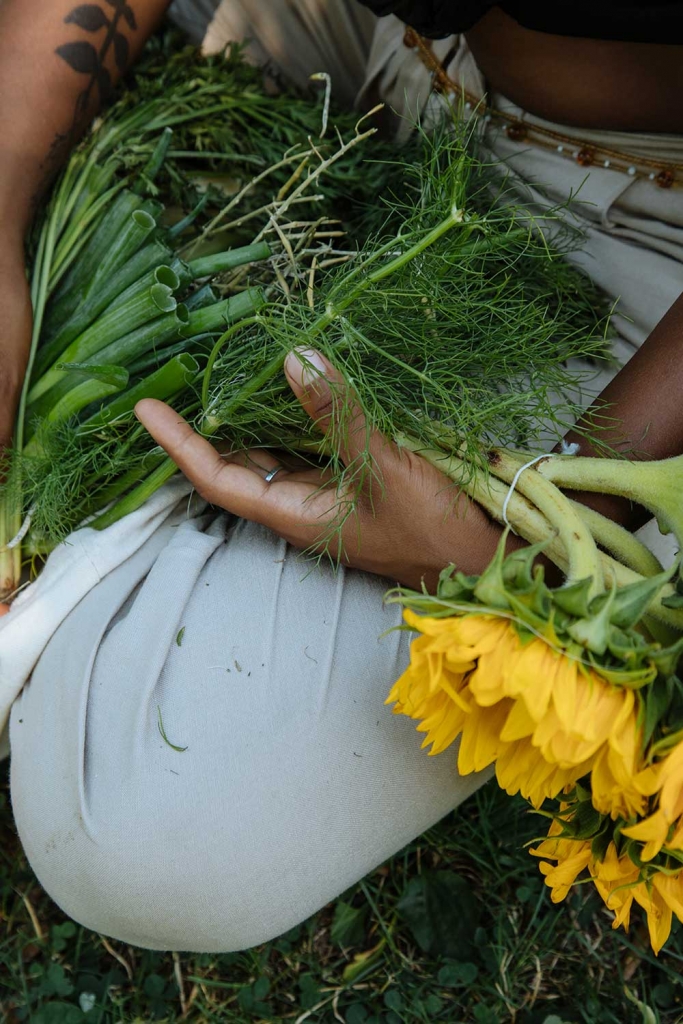
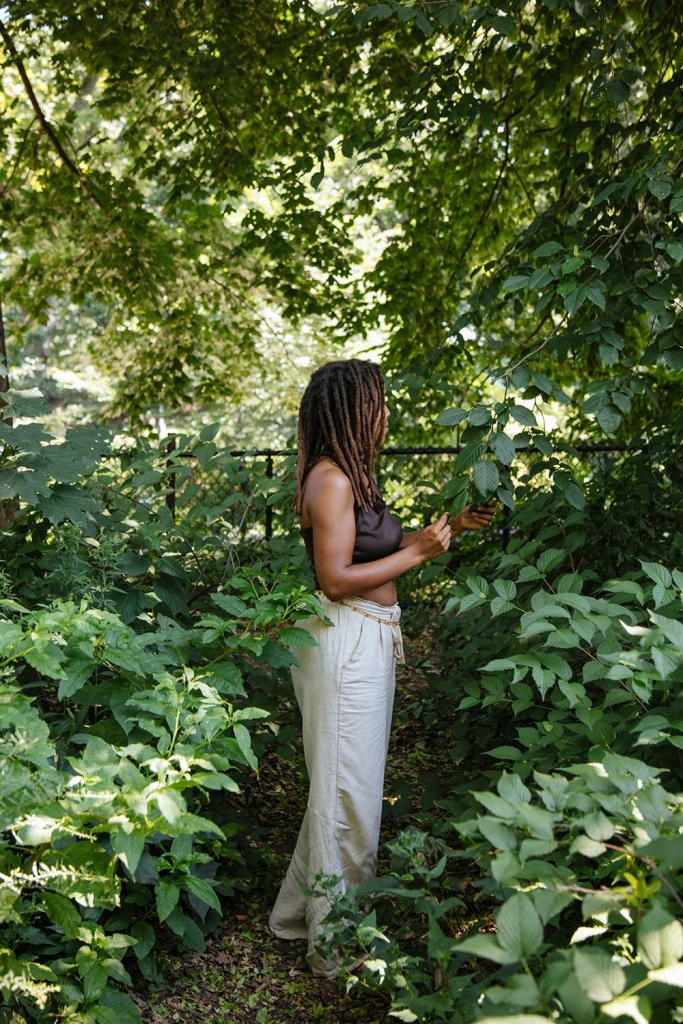
Each of the 14 acres would be given to a teen who would be paired with a Black or Brown urban agriculture leader to help them farm it. Once these teens have had a chance to grow whatever they want — herbs for tinctures, veggies, flowers — they can extend the experience at Amber’s (future) farm outside the city. From there, she plans to set up a job placement program for participants who want to farm in a rural setting. “We would have a network of farmers where Black and Brown kids can go to be safe and be paid,” she says.
The dream is still nascent. Amber has begun giving talks and interviews about it, and she’s reached out to the Central Park Conservancy, without response. They did, however, reply to a request for comment from BESIDE, which read in part: “Central Park serves as a respite from the stresses of urban life for all New Yorkers, especially now as it is a place to go for fresh air and social distancing while we navigate the current public health crisis. It was designed with a social purpose — to provide a sense of community — the loss of which is one of the most profound challenges during this time.”
Amber sees it differently. “This is the cure for Central Park. If they did this, it would only bring goodness to them. And not only them, but it will also be initiating younger people to get into the farming movement and be able to do whatever they want with their own communities in New York City.”
She’s not asking for any money; everything would be donated and fundraised. “The people are waiting. There are 300 volunteers in my inbox that are waiting for this vision to happen,” she says.
Governor Andrew Cuomo has said that New York State is anticipating that two million people will go hungry post–COVID-19. For Amber, it’s a no-brainer: farm the parks.
For now, Amber fully embodies the heroic urban farmer whose whole will and ethos is devoted to feeding her community, especially Black and Brown people in Brooklyn, where she grew up. But she doesn’t see herself staying in New York City. “I would rather set up things here so other people can fill in those roles, and then I retreat to land,” she says. She wants to bring urban Black youth into rural living and, as she puts it, “fill in the void of ‘What does Black rural America look like in the Northeast?’”
Once she’s set up with her own farm in the country, she plans to focus on flowers. “I think cut flowers is an industry that is kept very quiet because most of the flowers are coming from Europe, Africa, and Ecuador,” she says. “I think it would be interesting to explore what cut flowers look like from a Black American perspective.”
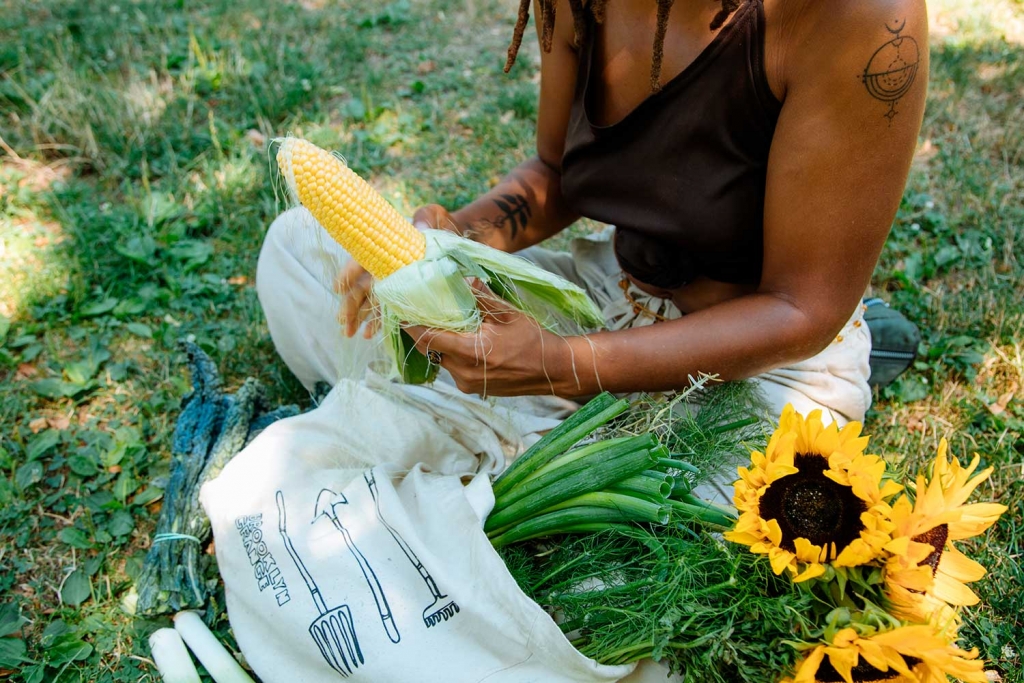
Further in her future, Amber wants to start helping those trapped in America’s prison-industrial system. “With my dad being in prison for murdering my mom, and with the number of Black men that are in prison, whether they are guilty or not, I think farming in prison is super important,” she says. But it will take a few decades before she’s ready, “due to the levels of trauma that are in that realm, for me personally, and for me as a Black woman in Black community.”
With all those projects in development, and still working for an hourly wage at the Brooklyn Grange rooftop farms, Amber has to stay focused on her own well-being:
“Farming is a dance. It is a sport. It’s utilizing your body on 10, but also not having time to eat . . . It’s a very intense lifestyle, and it eats away at your body.”
The self-care component is vital, and she’s strict about eating well and resting properly. “But it needs to be supported. If you care about farmers bringing you yield, you have to care about them having time.”
Never Miss Another Issue
Two issues per year
25% OFF previous issues
Free Shipping in Canada